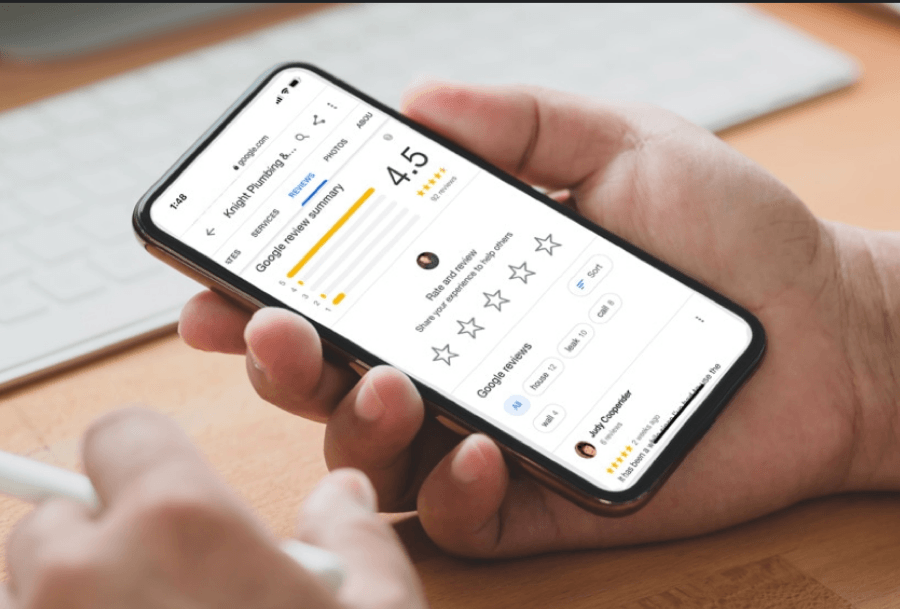Zero-Click Searches: The Silent Killer of Your Website Traffic?

Last Updated on 12 November 2025 by Dorian Menard
As an SEO consultant who founded Search Scope here in Perth, I talk to Australian business owners every day who are seeing their website traffic fall despite holding strong rankings. The culprit is often the rise of zero-click searches.
You’re not imagining it. According to a July 2024 report from SparkToro and Similarweb, around 60-63% of all Google searches now end without a click to any website. It’s a fundamental shift in how people use search, driven by Google answering questions directly on the results page.
But this isn’t a death sentence for your digital strategy. It’s an opportunity to focus on visibility over vanity metrics. This article will show you exactly how to adapt your SEO for this new reality.
TLDR: How to Adapt to Zero-Click Searches
- Focus on “On-SERP SEO”: Optimise for visibility in answer boxes, local packs, and knowledge panels.
- Dominate Local Search: Turn your Google Business Profile into a powerful conversion tool.
- Create “Un-snippable” Content: Develop in-depth resources that demand a click-through.
- Leverage Video: Use video snippets to capture attention and drive traffic.
What Are Zero-Click Searches and Why Are They Increasing?
A zero-click search happens when a user’s query is answered directly on the search engine results page (SERP), so they don’t need to click on any of the website links. Google has become incredibly efficient at providing these instant answers through a range of SERP features.
This trend is accelerating. Data from Similarweb shows that since the wider rollout of AI Overviews in May 2024, zero-click searches have jumped from 56% to nearly 69% in just one year. Here are the primary features responsible for this shift:
- AI Overviews: These AI-generated summaries now appear for around 13% of queries as of March 2025 and directly answer complex questions at the top of the page. Studies show their presence can reduce clicks to top-ranking pages by up to 34.5%.
- Featured Snippets: Often called “Position Zero,” these are the answer boxes that appear for many informational queries. While they only appear in about 19% of searches, they are highly visible and satisfy user intent quickly.
- People Also Ask (PAA) Boxes: This is a massive driver of zero-click behaviour, appearing in over 64% of search results. Each time a user clicks a question, they get a short answer and more related questions, keeping them on the SERP.
- Knowledge Panels: These boxes provide quick, factual information about businesses, people, or places, pulling data from various sources, including your Google Business Profile.
- Local Pack Results: For any “near me” or location-based search, the map pack shows business hours, phone numbers, and reviews, often making a website visit unnecessary. A 2024 study by Backlinko found that 42% of local searchers click on the map pack results.

Is This the End of Website Traffic?
Seeing those numbers, it’s easy to feel disheartened. But in my experience, this is less of a threat and more of a strategic pivot. While clicks might be down, visibility and brand presence on the SERP are more valuable than ever.
Think of the Google search page as your new storefront. Every time your brand appears in a featured snippet, a local pack, or an AI Overview, you are building authority and brand recall. This is a strategy we call “On-SERP SEO,” and it’s about winning in the search results themselves, not just winning the click.
The goal is changing from driving clicks to building brand authority directly on the search results page. Your brand can reach more eyes than ever before, even if fewer people visit your site.
How Can Aussie Businesses Adapt to Zero-Click SEO?
Focusing on On-SERP SEO doesn’t mean abandoning traditional tactics, but rather enhancing them to compete in this new environment. Here are the exact strategies I’ve used with my clients across Australia to not just survive, but thrive.
1. Optimise for Featured Snippets and People Also Ask
When a Perth-based health food retailer saw their traffic drop by 35%, we shifted their content strategy to aggressively target answer-based queries. Instead of just writing blog posts, we created dedicated FAQ sections that directly answered common customer questions.
The result? While their direct clicks initially dipped, their overall brand visibility in search results soared by 215%. This translated to a 19% increase in foot traffic because customers saw them as the authoritative source for information on organic certifications and food sourcing.
Actionable Tips:
- Answer Concisely: Structure answers in clear, 40-60 word paragraphs right below a question-based heading (H2 or H3). A Semrush study found the average PAA answer is 41 words.
- Use Schema Markup: Implement `FAQPage` schema on your pages. This is structured data that explicitly tells Google you have content in a question-and-answer format, making it easier for them to feature you.
- Find Questions with Tools: Use tools like Ahrefs or Semrush to find the PAA questions your competitors are ranking for. You can also use free tools like AlsoAsked to discover related questions for any search term.
You can use the following prompt to make any content more NLP-friendly:
"Create content strictly adhering to an NLP-friendly format, emphasizing clarity and simplicity in structure and language. Use straightforward subject-verb-object sentences, selecting precise words and avoiding ambiguity. Exclude filler content and focus on delivering information succinctly. Avoid complex or abstract terms such as 'meticulous,' 'navigating,' 'complexities,' 'bespoke,' 'tailored,' 'underpins,' 'ever-changing,' 'not only,' 'designed to enhance,' and similar phrases. This approach streamlines content for better NLP algorithm comprehension, ensuring the output is direct, accessible, and easily interpretable. While prioritizing NLP-friendly content creation (60%), also dedicate 40% of your focus to making the content engaging and enjoyable for readers, balancing technical NLP optimization with readability and value."2. What is the best way to optimise your Google Business Profile?
For local businesses, your Google Business Profile (GBP) is your most powerful tool against zero-click search traffic loss. We worked with a Melbourne café chain to transform their basic listing into a conversion engine.
According to a 2024 survey from BrightLocal, 88% of consumers say they would use a business that responds to all its reviews. By focusing on active profile management, the café achieved an 80% increase in foot traffic and a 30% boost in call-in orders, all from their GBP listing.
- Added high-quality photos with Australian-specific descriptions (“Real Aussie brekkie with house-made Vegemite hollandaise”).
- Utilised GBP Posts to announce local events and daily specials, keeping the profile fresh.
- Responded to every single review within 24 hours, building trust and engagement.
- Used the Q&A feature to proactively answer common questions about dietary options and parking.

3. Create Content That Google Can’t Summarise
When a Brisbane-based partner web agency found their how-to guides were being cannibalised by featured snippets, we helped them pivot their strategy. The goal was to create content so valuable and in-depth that Google couldn’t easily condense it into an answer box.
They developed a comprehensive, location-specific guide titled “Navigating Brisbane’s Digital Business Grants.” This piece generated 300% more clicks than their previous general guides because it included details that required user interaction and couldn’t be summarised.
Their Winning Formula:
- Focus on local case studies and unique data that isn’t widely available.
- Include downloadable resources, like checklists or application templates, that require a click.
- Add interactive elements, such as a grant eligibility calculator or a map of local support offices.
- Go in-depth. This follows the “Skyscraper Technique,” a concept popularised by Brian Dean of Backlinko, which focuses on creating the most comprehensive resource available on a topic.
4. Use Video to Capture Attention on the SERP
A Gold Coast Surf Club was facing declining clicks for its product pages. We helped them implement video-rich snippets for their product reviews. By creating short, 60-second preview videos and embedding them on the product pages with the correct `VideoObject` schema, they stood out on the SERP.
This simple change led to a 150% increase in visits to their product pages. Users watched the brief previews directly in the search results and then clicked through to see the full review and make a purchase. Implementing `VideoObject` schema is critical because it tells search engines exactly what your video is about, making it eligible for these eye-catching rich snippets.
YouTube is one of the most effective platforms for generating qualified traffic. As Google’s own property, its videos are frequently prioritised in search results, building trust and visibility.
Why Zero-Click Searches Are an Opportunity
The rules of SEO have changed, but the game is far from over. Success in this new landscape means looking beyond website traffic as your only measure of success. Your brand can still connect with customers, and it often happens before they even land on your homepage.
The rise of zero-click searches forces us to be better marketers. It pushes us to create more valuable content, engage more directly with customers on platforms like Google Business Profile, and build a brand that people recognise and trust directly from the SERP.
For savvy Australian businesses, this isn’t a crisis. It’s a chance to build a stronger, more visible brand in the place it matters most: the search results page.
Frequently Asked Questions about Zero-Click Searches
What percentage of searches are zero-click in 2025?
According to data from mid-2024 and early 2025, between 60% and 69% of Google searches are now zero-click, meaning the user finds their answer on the results page without clicking a website link.
How do AI Overviews affect website traffic?
AI Overviews have a significant impact. Studies show they can reduce the click-through rate (CTR) for top-ranking organic results by as much as 34.5%. They primarily affect informational queries, which make up about 88% of the searches where AI Overviews appear.
Are all keywords affected by zero-click searches equally?
No. Informational keywords (like “how to,” “what is”) are most affected because they can be easily answered by features like AI Overviews and Featured Snippets. Commercial, transactional, and local keywords still tend to drive clicks because users need to visit a website to purchase something or get contact details.
What is On-SERP SEO?
On-SERP SEO is a strategy that focuses on maximising your brand’s visibility directly on the search engine results page. Instead of aiming only for a website click, the goal is to appear in as many SERP features as possible, such as Featured Snippets, People Also Ask boxes, Knowledge Panels, and the Local Pack.
What tools can I use to track zero-click opportunities?
Several SEO platforms are excellent for this. Tools like Semrush and Ahrefs have features to track which SERP features are appearing for your target keywords and identify where your competitors are being featured. You can use these insights to find opportunities to optimise your own content for those same features.
Does zero-click mean SEO is dead?
Absolutely not. It just means SEO is evolving. The focus is shifting from purely driving clicks to building brand authority and visibility on the SERP itself. Optimising for these new features is the future of effective SEO.